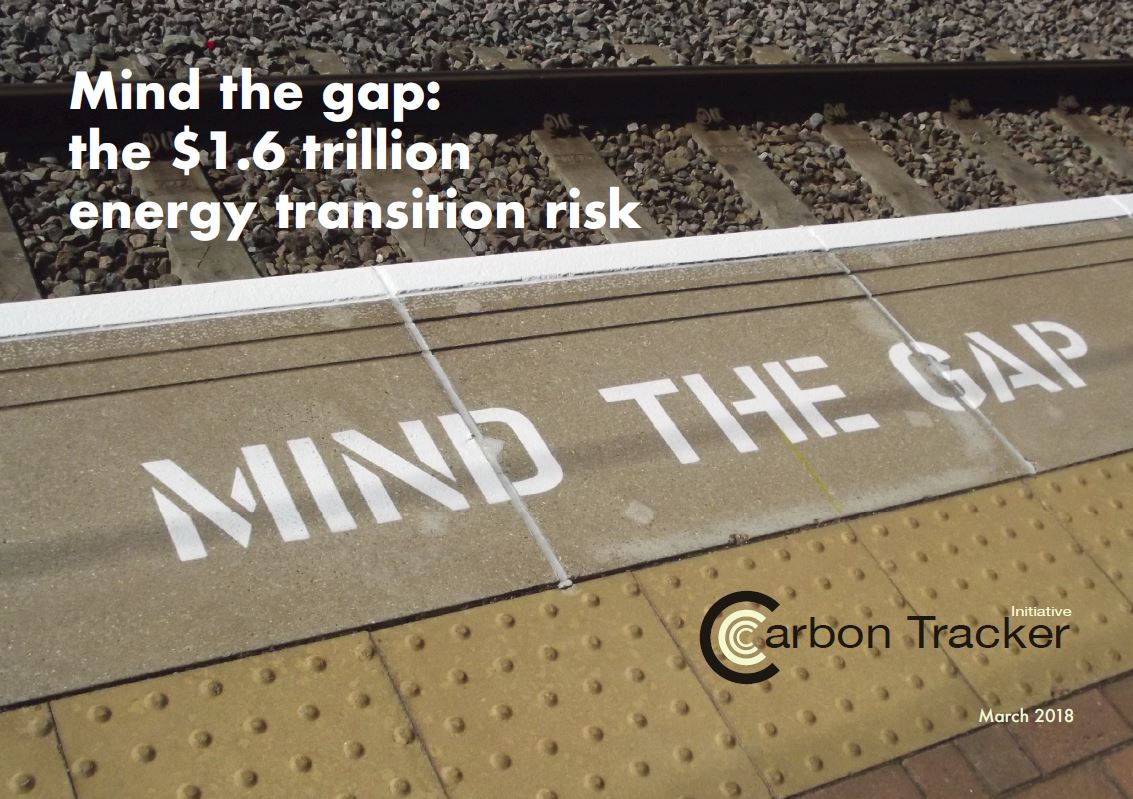Mind The Gap: the $1.6 trillion energy transition risk
Oil, gas and thermal coal face varying challenges and degrees of risk in a climate-constrained future. This report will look at each of these fuels in turn with a focus on the upstream end of the value chain, comparing potential supply to a selection of different demand scenarios that result in varying global warming outcomes.
The three scenarios used are drawn from those published annually by the International Energy Agency (IEA). These are the Beyond 2 Degrees Scenario (B2DS, aligned with a 1.75°C global warming outcome); the Sustainable Development Scenario (SDS, aligned with 2°C); and the New Policies Scenario (NPS, aligned with 2.7°C). Each of the scenarios assumes a 50% probability of success in achieving its respective level of warming.
Key takeaways:
• Compared to the SDS, the 1.75°C B2DS demand scenario puts a further $0.7tr capex at risk over the period 2018-2025 for the three fossil fuels (15% of NPS capex). Compared to the NPS, the B2DS requires $1.6tr less capex over the period 2018-2025 (33% of NPS). The SDS requires $0.9tr less (18% of NPS).
• Meeting demand in any of the three scenarios will still require very significant investment. Capital expenditure on existing and new projects in the period 2018-2025 amounts to $3.3tr in the B2DS, $4.0tr in the SDS and $4.8tr in the NPS.
• Coal carries disproportionate danger to the climate, but absolute capex dollars are low compared to oil and gas. Oil and gas account for over 90% of total investment under each scenario, and of the intervals between each scenario.
• New oil and gas projects are needed, but not all of them. Material investment in new oil & gas projects is required even in low demand scenarios - $1.6tr in the B2DS and $2.1tr in the SDS (2018-2025). However, given the multitude of project options available, they also carry the greatest risk. Nearly a quarter of investment dollars in new projects that go ahead in the NPS don’t fit in the SDS, and over 40% of potential capex is surplus to requirements in the B2DS.
• No new thermal coal mines go ahead in the US or China, or to supply the international seaborne export market, in either the SDS or B2DS. This is consistent with prior findings, despite a diminished outlook for potential production.
• No investment in new greenfield oil sands projects is required before 2025 in the B2DS or the SDS.
Do read the full report, please click here.

